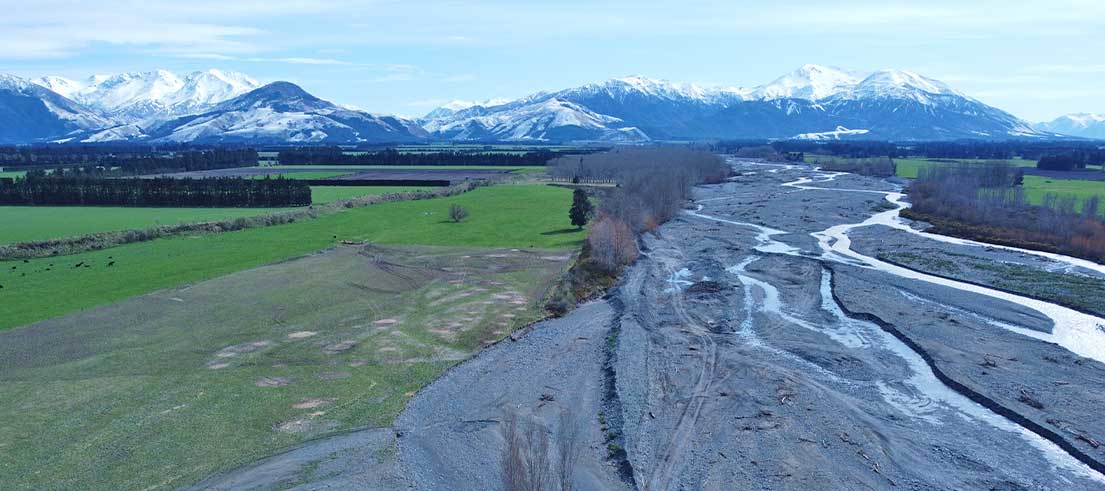
Making room for rivers
The scale of destruction across the eastern North Island in a single storm has been difficult to take in.

Shaun McCracken, Flood protection recovery manager
This was a truly devastating event impacting multiple regions. We are not immune in Canterbury; our own experiences in the floods of 2021 were bad enough, but we were fortunate that in our case no lives were lost.
These are events that ought to make us think about how we are living with our rivers. Silt-filled paddocks, ruined crops, buried homes, public infrastructure destroyed and tragically, the lives that were lost, all indicate that we need to start thinking about our future relationship with our awa in 21st-century Aotearoa.
This is a warning shot for New Zealand - loud and clear.
Flood risk management
Effective flood risk management is a multi-stringed bow which includes engineered structures, bed level management, vegetation, ponding / storage areas, wetlands, land-use planning, weather forecasting, river flow predictions, emergency management, insurance and more.
As our climate continues to alter, existing flood protection measures are going to be tested and design capacities exceeded in future deluges. Engineers refer to this as the residual risk - the risk that remains even with a flood protection scheme in place. Events of the magnitude of Cyclone Gabrielle will recur and likely more frequently.
We need to prepare for these storms and accommodate these events. To do this effectively needs a long-term perspective. We need a multi-generational view - if we keep doing things the way we've always done in our river corridors, we are manufacturing future disasters for our children, grandchildren and great-grandchildren to deal with and suffer.
Changing the way we live with our rivers
In many locations, more space is needed for our rivers. We know that rivers are more than just conduits for water - they also convey (literally) millions of tonnes of sediment, provide unique habitat and biodiversity values, mahinga kai, recreation, the list goes on.
This can all be factored into the space our rivers need to function, without causing the disruption and loss we've seen across the eastern North Island in Cyclone Gabrielle.
We need an approach that recognises the dynamism of our rivers and their catchments, because treating rivers in isolation from what comes down from their catchments and expecting no change in future river planform is unrealistic.
It is an unrealistic expectation to think that the rivers be let loose and given free rein, but as a community, we now need to take the long-term view and begin a conversation about giving our rivers more room.
My view is that this will require funding to compensate those who give back land to the river that’s been taken by society over time. Together we can begin to change the way we live with our rivers, so that people and communities don't have to die with our rivers again.
Shaun McCracken is our flood protection recovery manager for rivers and works closely with affected rural communities and stakeholders.
